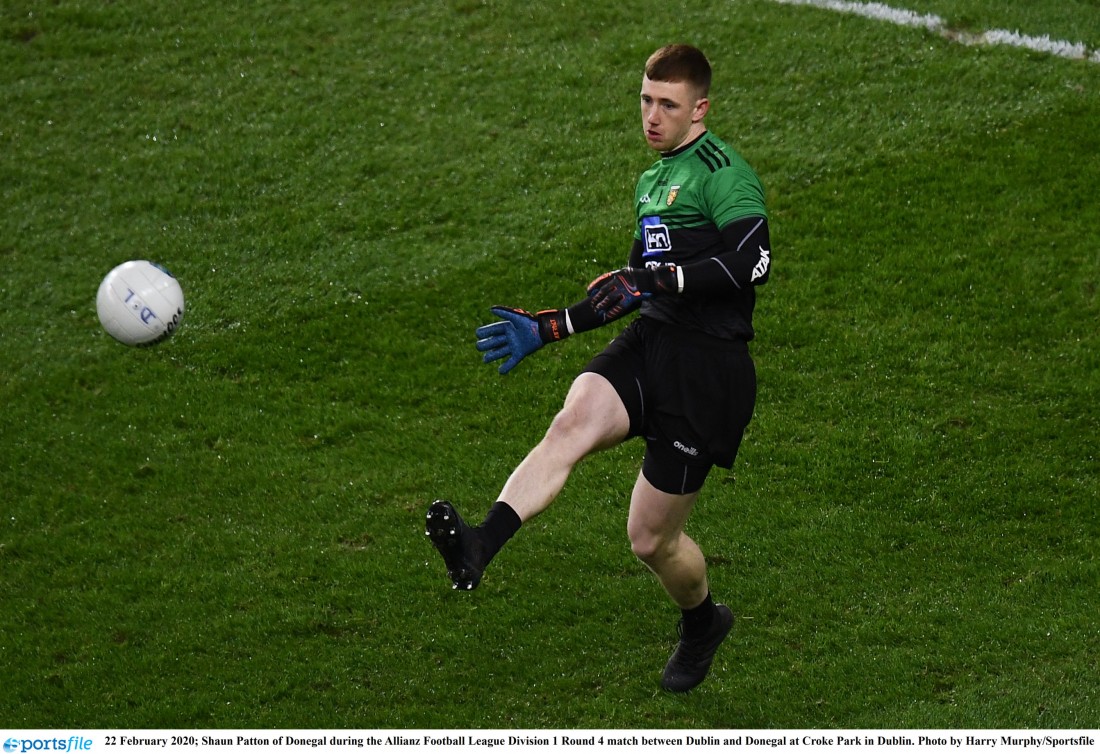WHEN you decide to build a house, you start with the foundations and work up, block by block, until eventually the roof goes on to complete the house.
Building a Gaelic football side with a style and system of play follows a similar path. Every team needs a solid foundation and after that, block by block, you build steadily towards what you see ultimately as the finished article, putting the little polished details on at the very end.
During the week I recorded a Skype interview with Shane Stapleton, who runs his own online GAA programme called ‘Our Game.’ Shane openly admits he is a hurling fanatic first and foremost but he is intrigued at the tactical detail and analysis in the game of football.
So during the week we set up a mini studio on my landing and had the tactics board in full view and we talked about the building blocks required to build a Gaelic football side.
We looked at restarts (the topic of today’s article), defensive organisation including how high we press, where we press from, how we defend, and key match-ups. Offensively we looked at the patterns of play that teams like to adopt, including Dublin’s basketball type strategies and how to coach effective decision-making in front of goal at training. Finally, we looked at one of the most overlooked and important elements, the game management – how we manage a game and make sure we try and play it on your own terms, including the signals and calls teams like to make.
The theme of restarts is where I am starting this week.
For me the primary reason of a restart is to retain possession of the ball, hence why the terminology changed from kick-out to restart -you are restarting the game with possession of the ball.
Restarts, don’t forget, are not just kick-outs, but can extend to non-scorable free-kicks and sideline balls but we will just focus on kick-outs for now.
Around five or six years ago, Ulster GAA did a survey on team kick-outs, looking at thousands of them over the course of a huge number of championship matches.
The data came back telling us that something like 75 percent of restarts retained ended in a scoring opportunity for the team, which is a phenomenal platform for starting to create attacks.
Consider that. For every four kick-outs you take, three will end in a scoring opportunity for your team. Just think how important that is.
The two ways of looking at restarts are very simple, your own and the opposition’s. Retain as many of your own as possible and try to disrupt the opposition kick-outs as best you can.
I have always had a simple philosophy on this; if you retain your own and break even on the opposition’s you will win most games.
On your own kick-outs, it’s important to have a variety of strategies, the first option for every team should be really quick and get it away before the opposition have time to set. After a team scores it does take the team five or six seconds to really tune in and the top keepers nowadays, the likes of Cluxton for example, are getting kick-outs away in less than eight seconds.
Other options you have on your own kick-out include narrowing formations and breaking into space, high formations and breaking into space, stretching and leaving holes for runners, overloading one side and drawing and driving over the top. The variations are endless but it does take a huge amount of work on the training ground to rehearse these plays.
On opposition kick-outs, you have the option to press man-to-man, which is simple, straight-forward and leaves everyone with the responsibility of a man.
Other ways of pressing are the zonal presses, the 3-3-3 formation, the bolder 4-4-4 formation or the super aggressive 4-5-5 formation that we have seen Dublin use before.
You can also tease a team into a false press by strategically giving the ball to a corner-back and then pressing or dropping to the ‘45’ and putting on a middle third press.
Some of these strategies obviously carry a risk and reward outcome but sometimes in football you have to be brave, come out of your comfort zone and try something different. If you want to see these strategies I have talked about, check them out on my tactics board video on Twitter at @stevie_poacher.
Receive quality journalism wherever you are, on any device. Keep up to date from the comfort of your own home with a digital subscription.
Any time | Any place | Anywhere












